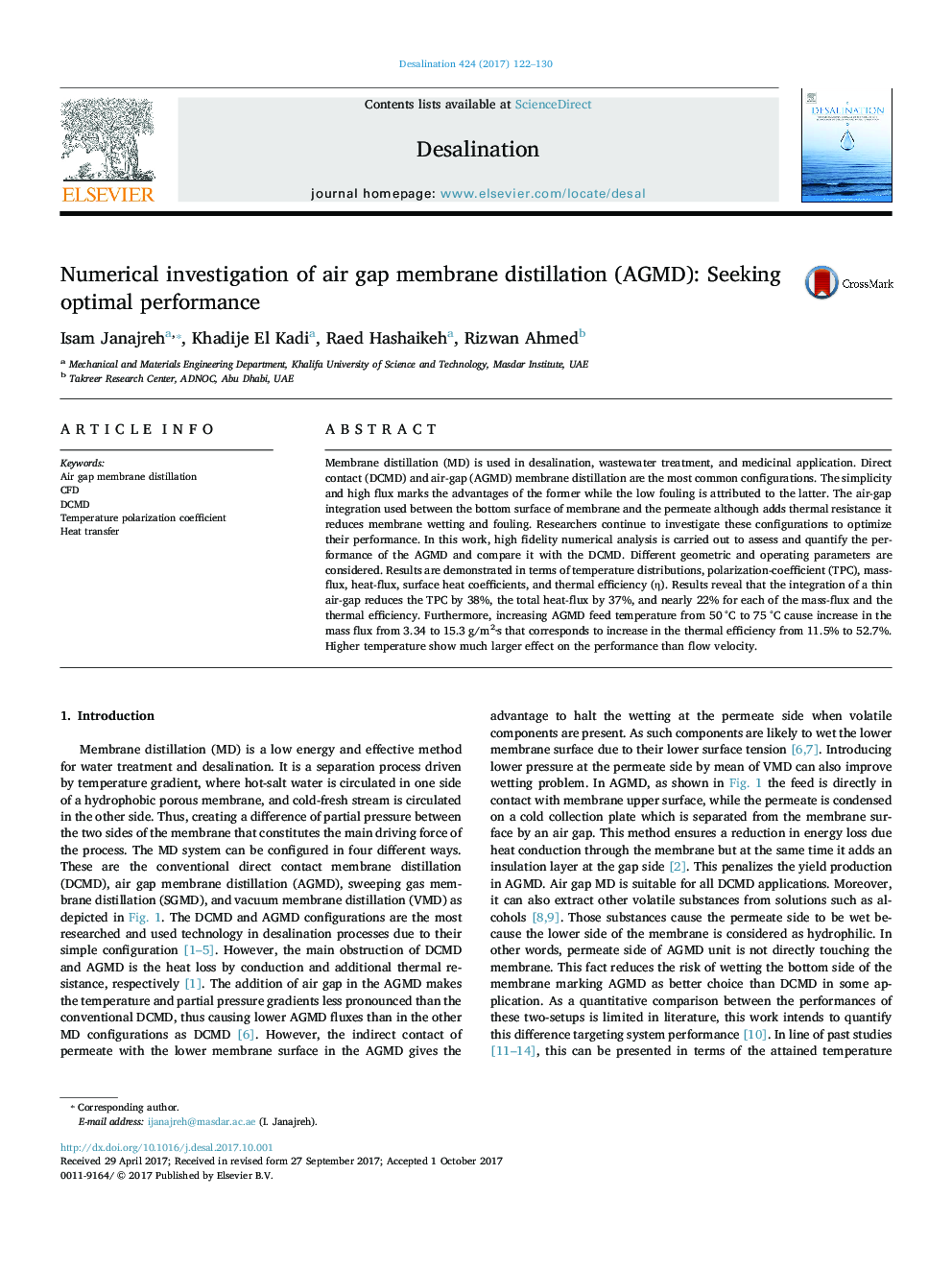| Article ID | Journal | Published Year | Pages | File Type |
|---|---|---|---|---|
| 4987552 | Desalination | 2017 | 9 Pages |
Abstract
Membrane distillation (MD) is used in desalination, wastewater treatment, and medicinal application. Direct contact (DCMD) and air-gap (AGMD) membrane distillation are the most common configurations. The simplicity and high flux marks the advantages of the former while the low fouling is attributed to the latter. The air-gap integration used between the bottom surface of membrane and the permeate although adds thermal resistance it reduces membrane wetting and fouling. Researchers continue to investigate these configurations to optimize their performance. In this work, high fidelity numerical analysis is carried out to assess and quantify the performance of the AGMD and compare it with the DCMD. Different geometric and operating parameters are considered. Results are demonstrated in terms of temperature distributions, polarization-coefficient (TPC), mass-flux, heat-flux, surface heat coefficients, and thermal efficiency (η). Results reveal that the integration of a thin air-gap reduces the TPC by 38%, the total heat-flux by 37%, and nearly 22% for each of the mass-flux and the thermal efficiency. Furthermore, increasing AGMD feed temperature from 50 °C to 75 °C cause increase in the mass flux from 3.34 to 15.3 g/m2·s that corresponds to increase in the thermal efficiency from 11.5% to 52.7%. Higher temperature show much larger effect on the performance than flow velocity.
Related Topics
Physical Sciences and Engineering
Chemical Engineering
Filtration and Separation
Authors
Isam Janajreh, Khadije El Kadi, Raed Hashaikeh, Rizwan Ahmed,
